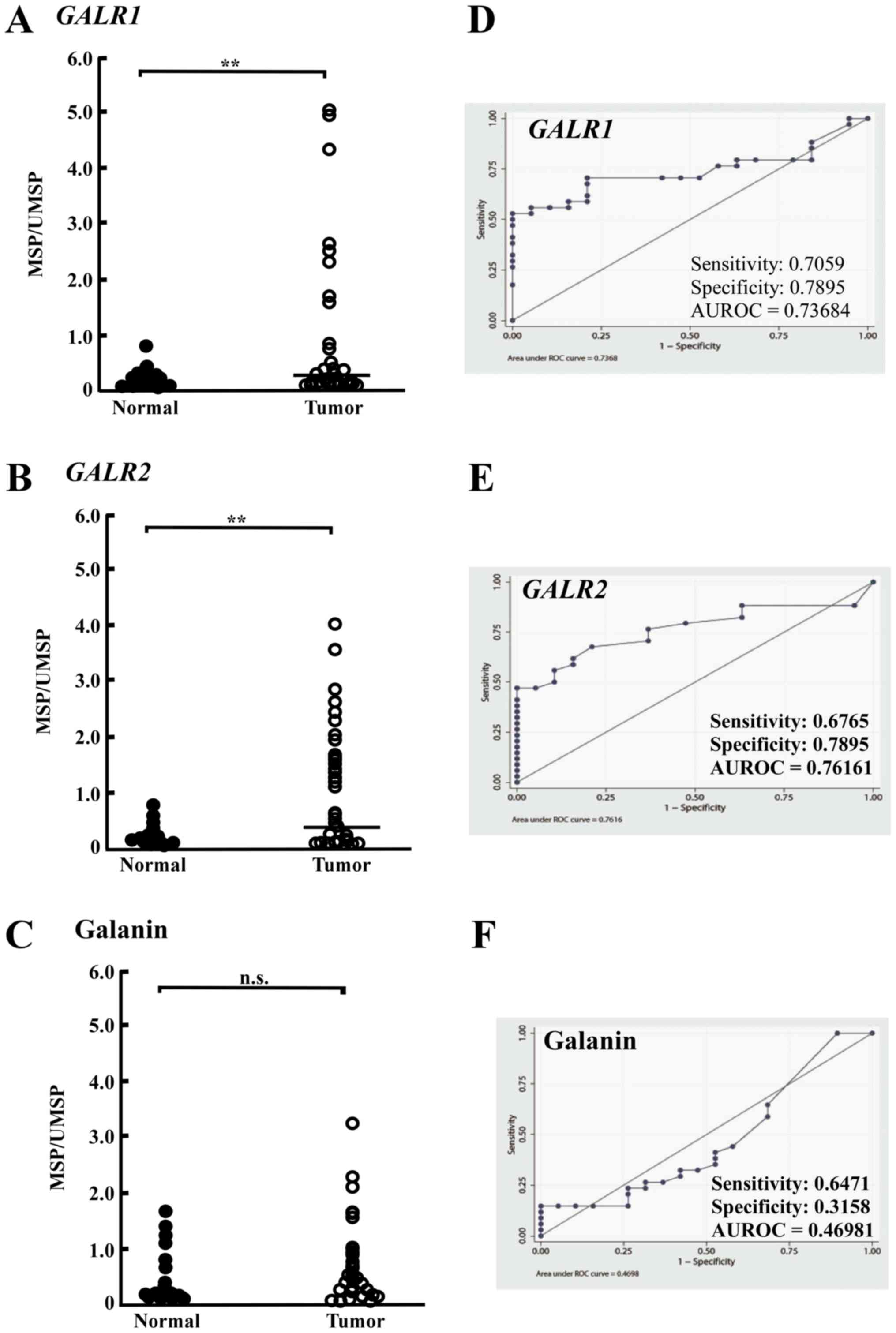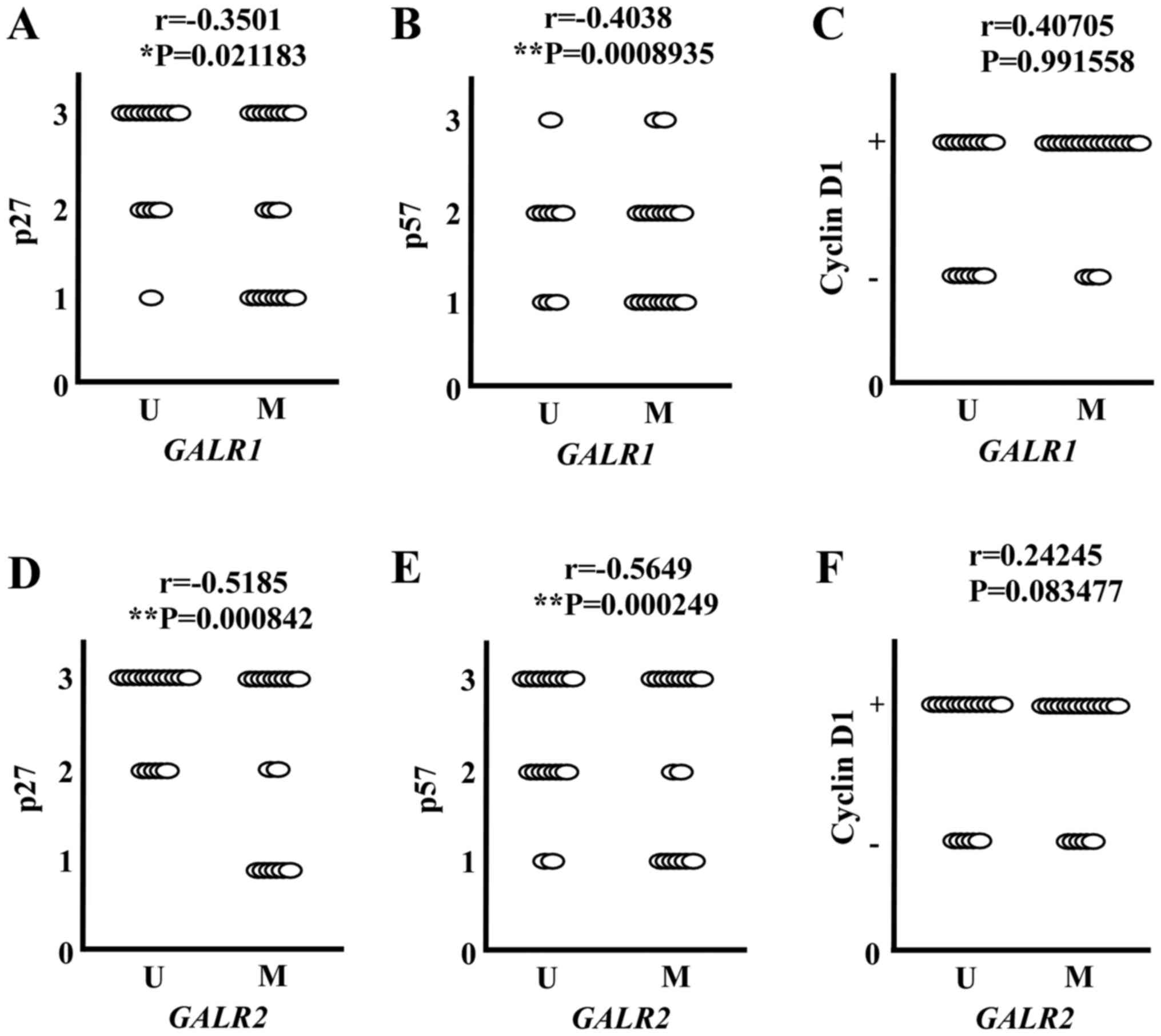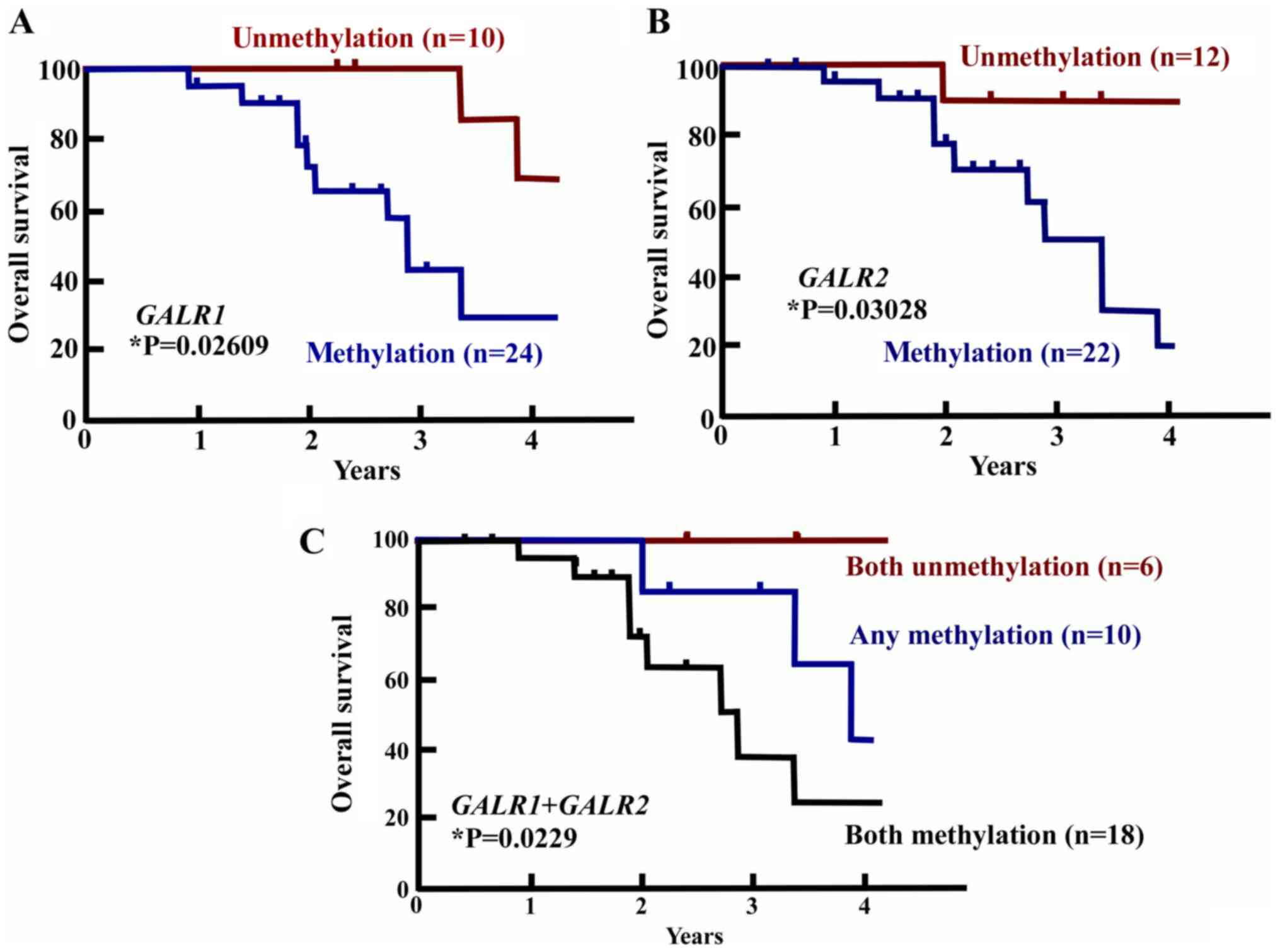|
1
|
Gilbert MR, Sharma A, Schmitt NC, Johnson
JT, Ferris RL, Duvvuri U and Kim S: A 20-year review of 75 cases of
salivary duct carcinoma. JAMA Otolaryngol Head Neck Surgery.
142:489–495. 2016. View Article : Google Scholar
|
|
2
|
Kleinsasser O, Klein HJ and Hübner G:
Salivary duct carcinoma. A group of salivary gland tumors analogous
to mammary duct carcinoma. Arch Klin Exp Ohren Nasen
Kehlkopfheilkd. 192:100–105. 1968.(In German). View Article : Google Scholar : PubMed/NCBI
|
|
3
|
Jaehne M, Roeser K, Jaekel T, Schepers JD,
Albert N and Löning T: Clinical and immunohistologic typing of
salivary duct carcinoma: A report of 50 cases. Cancer.
103:2526–2533. 2005. View Article : Google Scholar : PubMed/NCBI
|
|
4
|
Takase S, Kano S, Tada Y, Kawakita D,
Shimura T, Hirai H, Tsukahara K, Shimizu A, Imanishi Y, Ozawa H, et
al: Biomarker immunoprofile in salivary duct carcinomas:
clinicopathological and prognostic implications with evaluation of
the revised classification. Oncotarget. 8:59023–59035. 2017.
View Article : Google Scholar : PubMed/NCBI
|
|
5
|
Masubuchi T, Tada Y, Maruya S, Osamura Y,
Kamata SE, Miura K, Fushimi C, Takahashi H, Kawakita D, Dishimoto
S, et al: Clinicopathological significance of androgen receptor,
HER2, Ki-67 and EGFR expressions in salivary duct carcinoma. Int J
Clin Oncol. 20:35–44. 2015. View Article : Google Scholar : PubMed/NCBI
|
|
6
|
Di Palma S, Simpson RH, Marchiò C, Skálová
A, Ungari M, Sandison A, Whitaker S, Parry S and Reis-Filho JS:
Salivary duct carcinomas can be classified into luminal androgen
receptor-positive, HER2 and basal-like phenotypes. Histopathology.
61:629–643. 2012. View Article : Google Scholar : PubMed/NCBI
|
|
7
|
Kondo Y, Kikuchi T, Esteban JC, Kumaki N,
Ogura G, Inomoto C, Hirabayashi K, Kajiwara H, Sakai A, Sugimoto R,
et al: Intratumoral heterogeneity of HER2 protein and amplification
of HER2 gene in salivary duct carcinoma. Pathol Int. 64:453–459.
2014. View Article : Google Scholar : PubMed/NCBI
|
|
8
|
Yamamoto N, Minami S and Fujii M:
Clinicopathologic study of salivary duct carcinoma and the efficacy
of androgen deprivation therapy. Am J Otolaryngol. 35:731–735.
2014. View Article : Google Scholar : PubMed/NCBI
|
|
9
|
Allgayer H, Babic R, Gruetzner KU,
Tarabichi A, Schildberg FW and Heiss MM: c-erbB-2 is of independent
prognostic relevance in gastric cancer and is associated with the
expression of tumor-associated protease systems. J Clin Oncol.
18:2201–2209. 2000. View Article : Google Scholar : PubMed/NCBI
|
|
10
|
Williams MD, Roberts DB, Kies MS, Mao L,
Weber RS and El-Naggar AK: Genetic and expression analysis of HER-2
and EGFR genes in salivary duct carcinoma: empirical and
therapeutic significance. Clin Cancer Res. 16:2266–2274. 2010.
View Article : Google Scholar : PubMed/NCBI
|
|
11
|
Nabili V, Tan JW, Bhuta S, Sercarz JA and
Head CS: Salivary duct carcinoma: A clinical and histologic review
with implications for trastuzumab therapy. Head Neck. 29:907–912.
2007. View Article : Google Scholar : PubMed/NCBI
|
|
12
|
Soper MS, Iganej S and Thompson LD:
Definitive treatment of androgen receptor-positive salivary duct
carcinoma with androgen deprivation therapy and external beam
radiotherapy. Head Neck. 36:E4–E7. 2014. View Article : Google Scholar : PubMed/NCBI
|
|
13
|
Campos-Gómez S, Flores-Arredondo JH,
Dorantes-Heredia R, Chapa-Ibargüengoitia M and de la Peña-Lopez R:
Case report: Anti-hormonal therapy in the treatment of ductal
carcinoma of the parotid gland. BMC Cancer. 14:7012014. View Article : Google Scholar : PubMed/NCBI
|
|
14
|
Lee JS, Kwon OJ, Park JJ and Seo JH:
Salivary duct carcinoma of the parotid gland: Is adjuvant
HER-2-targeted therapy required? J Oral Maxillofac Surg.
72:1023–1031. 2014. View Article : Google Scholar : PubMed/NCBI
|
|
15
|
Krishnamurthy J, Krishnamurty DM, Baker
JJ, Zhen W, Lydiatt D and Ganti AK: Salivary duct carcinoma
responding to trastuzumab-based therapy: Case report and review of
the literature. Head Neck. 35:E372–E375. 2013. View Article : Google Scholar : PubMed/NCBI
|
|
16
|
Perissinotti AJ, Lee Pierce M, Pace MB,
El-Naggar A, Kies MS and Kupferman M: The role of trastuzumab in
the management of salivary ductal carcinomas. Anticancer Res.
33:2587–2591. 2013.PubMed/NCBI
|
|
17
|
Limaye SA, Posner MR, Krane JF, Fonfria M,
Lorch JH, Dillon DA, Shreenivas AV, Tishler RB and Haddad RI:
Trastuzumab for the treatment of salivary duct carcinoma.
Oncologist. 18:294–300. 2013. View Article : Google Scholar : PubMed/NCBI
|
|
18
|
Kanazawa T, Misawa K, Misawa Y, Uehara T,
Fukushima H, Kusaka G, Maruta M and Carey TE: G-Protein-coupled
receptors: Next generation therapeutic targets in head and neck
cancer? Toxins (Basel). 7:2959–2984. 2015. View Article : Google Scholar : PubMed/NCBI
|
|
19
|
Kanazawa T, Iwashita T, Kommareddi P, Nair
T, Misawa K, Misawa Y, Ueda Y, Tono T and Carey TE: Galanin and
galanin receptor type 1 suppress proliferation in squamous
carcinoma cells: Activation of the extracellular signal regulated
kinase pathway and induction of cyclin-dependent kinase inhibitors.
Oncogene. 26:5762–5771. 2007. View Article : Google Scholar : PubMed/NCBI
|
|
20
|
Kanazawa T, Kommareddi PK, Iwashita T,
Kumar B, Misawa K, Misawa Y, Jang I, Nair TS, Iino Y and Carey TE:
Galanin receptor subtype 2 suppresses cell proliferation and
induces apoptosis in p53 mutant head and neck cancer cells. Clin
Cancer Res. 15:2222–2230. 2009. View Article : Google Scholar : PubMed/NCBI
|
|
21
|
Kanazawa T, Misawa K and Carey TE: Galanin
receptor subtypes 1 and 2 as therapeutic targets in head and neck
squamous cell carcinoma. Expert Opin Ther Targets. 14:289–302.
2010. View Article : Google Scholar : PubMed/NCBI
|
|
22
|
Kanazawa T, Misawa K, Misawa Y, Maruta M,
Uehara T, Kawada K, Nagatomo T and Ichimura K: Galanin receptor 2
utilizes distinct signaling pathways to suppress cell proliferation
and induce apoptosis in HNSCC. Mol Med Rep. 10:1289–1294. 2014.
View Article : Google Scholar : PubMed/NCBI
|
|
23
|
Misawa K, Ueda Y, Kanazawa T, Misawa Y,
Jang I, Brenner JC, Ogawa T, Takebayashi S, Grenman RA, Herman JG,
et al: Epigenetic inactivation of galanin receptor 1 in head and
neck cancer. Clin Cancer Res. 14:7604–7613. 2008. View Article : Google Scholar : PubMed/NCBI
|
|
24
|
Misawa Y, Misawa K, Kanazawa T, Uehara T,
Endo S, Mochizuki D, Yamatodani T, Carey TE and Mineta H: Tumor
suppressor activity and inactivation of galanin receptor type 2 by
aberrant promoter methylation in head and neck cancer. Cancer.
120:205–213. 2014. View Article : Google Scholar : PubMed/NCBI
|
|
25
|
Misawa K, Mochizuki D, Endo S, Mima M,
Misawa Y, Imai A, Shinmura K, Kanazawa T, Carey TE and Mineta H:
Site-specific methylation patterns of the GAL and GALR1/2 genes in
head and neck cancer: Potential utility as biomarkers for
prognosis. Mol Carcinog. 56:1107–1116. 2017. View Article : Google Scholar : PubMed/NCBI
|
|
26
|
Chung W, Kwabi-Addo B, Ittmann M, Jelinek
J, Shen L, Yu Y and Issa JP: Identification of novel tumor markers
in prostate, colon and breast cancer by unbiased methylation
profiling. PLoS One. 3:e20792008. View Article : Google Scholar : PubMed/NCBI
|
|
27
|
Yu J, Zhang HY, Ma ZZ, Lu W, Wang YF and
Zhu JD: Methylation profiling of twenty four genes and the
concordant methylation behaviours of nineteen genes that may
contribute to hepatocellular carcinogenesis. Cell Res. 13:319–333.
2003. View Article : Google Scholar : PubMed/NCBI
|
|
28
|
Hammond ME, Hayes DF, Wolff AC, Mangu PB
and Temin S: American Society of Clinical Oncology/College of
American Pathologists guideline recommendations for
immunohistochemical testing of estrogen and progesterone receptors
in breast cancer. J Oncol Pract. 6:195–197. 2010. View Article : Google Scholar : PubMed/NCBI
|
|
29
|
Misawa K, Kanazawa T, Misawa Y, Uehara T,
Imai A, Takahashi G, Takebayashi S, Cole A, Carey TE and Mineta H:
Galanin has tumor suppressor activity and is frequently inactivated
by aberrant promoter methylation in head and neck cancer. Transl
Oncol. 6:338–346. 2013. View Article : Google Scholar : PubMed/NCBI
|
|
30
|
Jayaprakash V, Merzianu M, Warren GW,
Arshad H, Hicks WL Jr, Rigual NR, Sullivan MA, Seshadri M, Marshall
JR, Cohan DM, et al: Survival rates and prognostic factors for
infiltrating salivary duct carcinoma: Analysis of 228 cases from
the Surveillance, Epidemiology and End Results database. Head Neck.
36:694–701. 2014. View Article : Google Scholar : PubMed/NCBI
|
|
31
|
Misawa K, Misawa Y, Kanazawa T, Mochizuki
D, Imai A, Endo S, Carey TE and Mineta H: Epigenetic inactivation
of galanin and GALR1/2 is associated with early recurrence in head
and neck cancer. Clin Exp Metastasis. 33:187–195. 2016. View Article : Google Scholar : PubMed/NCBI
|

















